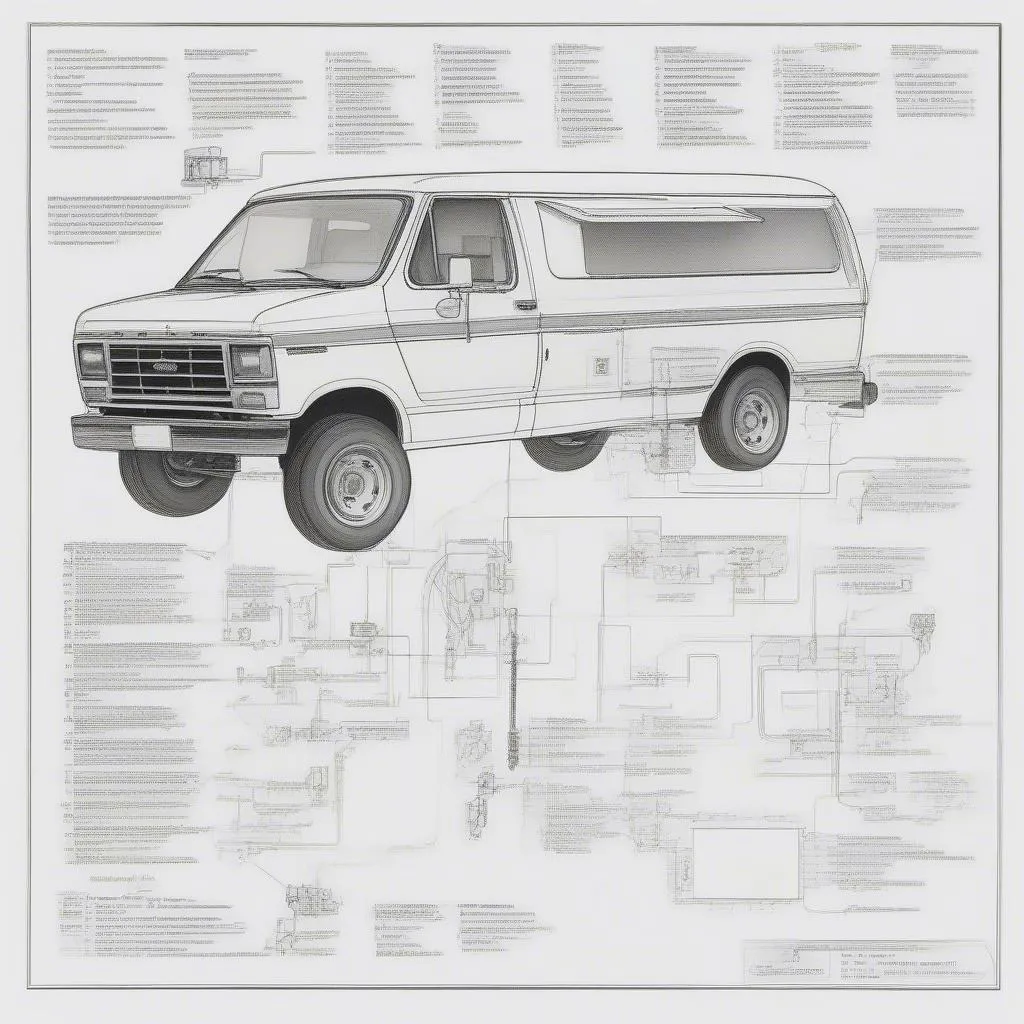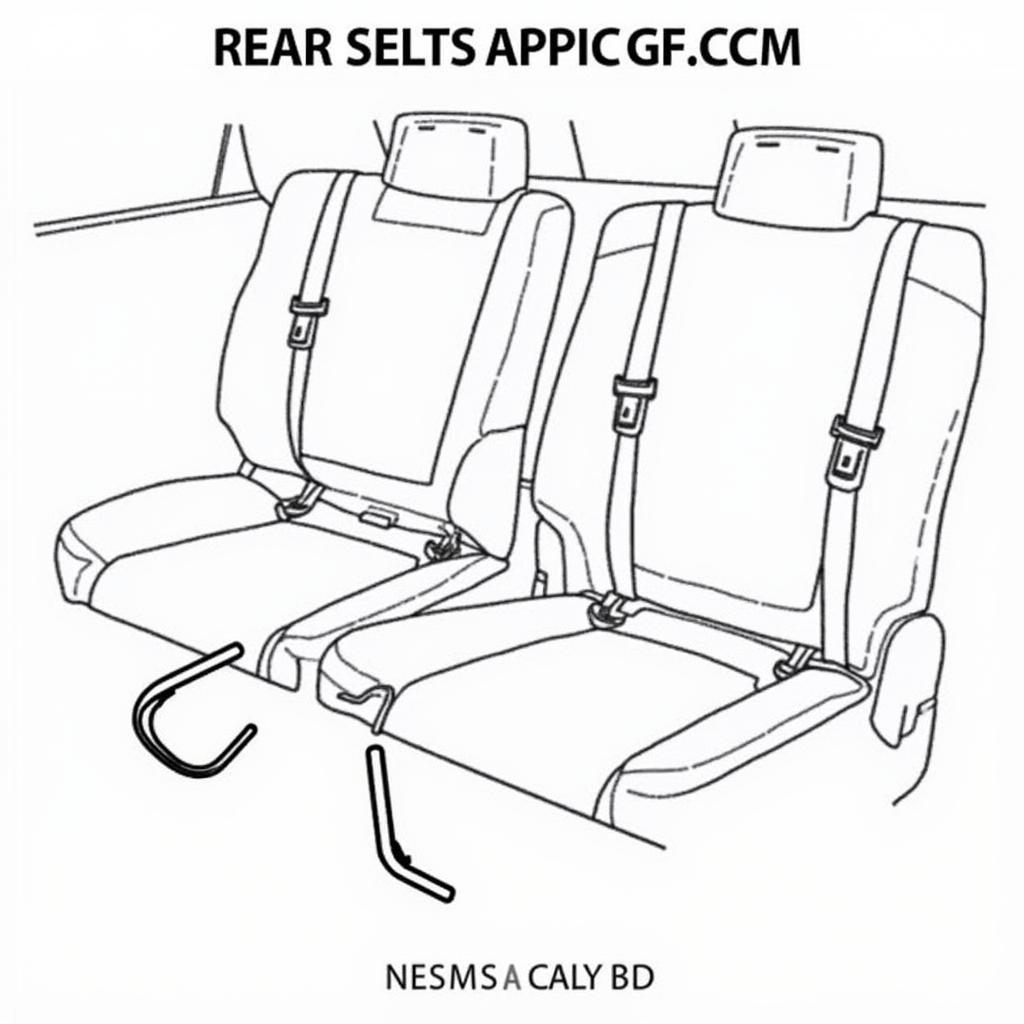The emergency brake warning light is an essential safety feature in your vehicle. When illuminated, it signals that your emergency brake is engaged or there’s an issue within the system. Ignoring this light can lead to decreased braking performance and potential safety hazards. This comprehensive guide delves into the common causes of an illuminated emergency brake warning light switch and provides steps for diagnosis and troubleshooting.
Understanding Your Emergency Brake Warning Light
The emergency brake warning light, often symbolized by a red exclamation mark within a circle or the word “BRAKE,” is designed to grab your attention. It typically illuminates when you engage your parking brake, also known as an emergency brake or handbrake. The light should switch off once the brake is fully released.
If the light stays on even after releasing the brake, or if it flickers intermittently, it indicates a potential problem within the system.
Common Causes of an Emergency Brake Warning Light Switch Issue
Several factors can trigger the emergency brake warning light switch to activate even when the parking brake is disengaged. Here are some of the most common culprits:
-
Low Brake Fluid: One of the most frequent causes is low brake fluid. This essential fluid transmits force from your brake pedal to the brake calipers, engaging your vehicle’s brakes. A leak in the system or worn brake pads can lead to low fluid levels, triggering the warning light.
-
Faulty Brake Fluid Level Sensor: Your car has a sensor in the brake fluid reservoir that monitors the fluid level. If this sensor malfunctions, it can send a false signal, illuminating the warning light even if the fluid level is sufficient.
-
Worn Brake Pads: Brake pads naturally wear down with use. When they become too thin, the brake caliper pistons need to extend further to apply the same braking force. This extension can push the brake fluid level lower, triggering the warning light.
-
Stuck Parking Brake Cable: The emergency brake system often utilizes a cable system to engage the rear brakes. Exposure to moisture or dirt can cause this cable to become corroded or stuck, preventing the parking brake from fully disengaging and keeping the warning light on.
 Inspecting Emergency Brake Cable
Inspecting Emergency Brake Cable
-
Electrical Issues: Like any electrical system in your car, the emergency brake warning light circuit can experience issues. A short circuit, blown fuse, or faulty wiring harness can disrupt the signal, causing the light to malfunction.
-
Issue with the Emergency Brake Switch: The emergency brake switch, usually located near the lever or pedal, signals the warning light to turn on and off. Over time, this switch can wear out, malfunction, or become misaligned, leading to an inaccurate signal.
Diagnosing the Problem
Determining the exact cause of your emergency brake warning light issue requires some investigation. Here’s a step-by-step guide to help you diagnose the problem:
-
Check Your Parking Brake: Start with the simplest possibility. Ensure your parking brake is fully released. Sometimes, a slight engagement can be enough to keep the light on.
-
Inspect Brake Fluid Level: Locate the brake fluid reservoir under the hood (refer to your owner’s manual for the exact location). The reservoir will have minimum and maximum markings. If the fluid level is below the minimum mark, add the correct type of brake fluid recommended by your vehicle manufacturer.
-
Inspect Brake Pads: If you’re comfortable with basic car maintenance, you can visually inspect your brake pads for wear. Look through the spaces between the wheel spokes to assess the thickness of the pads. If they appear thin or you hear a grinding noise when braking, it’s time for a replacement.
-
Check for Visible Leaks: Examine the area around the brake master cylinder, brake lines, and near the wheels for any signs of brake fluid leaks. Brake fluid is typically clear to yellowish in color and has an oily consistency.
-
Seek Professional Help: If the brake fluid level is low, you suspect a leak, or the light remains on after checking the basics, it’s crucial to seek professional assistance from a qualified mechanic. They have the expertise and tools to diagnose and address more complex issues, such as faulty sensors, electrical problems, or parking brake cable issues.
Remote Diagnostics and Software Solutions
In the age of technology, many modern vehicles offer advanced diagnostics capabilities. Some automakers provide remote diagnostics services, allowing technicians to access your vehicle’s data remotely and identify potential issues, including those related to the emergency brake system.
Additionally, software updates for your vehicle’s braking system can sometimes resolve glitches or improve system performance. Check with your manufacturer or dealership to see if any updates are available for your vehicle.
Preventive Measures
To minimize the risk of encountering emergency brake warning light issues, consider these preventive measures:
- Regular Brake Fluid Checks: Include checking your brake fluid level as part of your routine vehicle maintenance.
- Timely Brake Pad Replacement: Don’t wait for your brake pads to wear down completely before replacing them. Consult your owner’s manual or a trusted mechanic for recommended replacement intervals.
- Address Leaks Promptly: If you notice any brake fluid leaks, address them immediately.
- Regular Vehicle Inspections: Schedule regular vehicle inspections by a qualified mechanic to catch potential problems early.
When to Seek Immediate Attention
While a glowing emergency brake warning light doesn’t always indicate a dire situation, it’s essential to address the issue promptly. If you experience any of the following, seek immediate attention from a qualified mechanic:
- Brake Pedal Feels Spongy or Soft: This could indicate air in the brake lines, significantly reducing braking efficiency.
- Grinding Noise When Braking: This usually signals worn brake pads that need immediate replacement.
- Pulling to One Side When Braking: This could mean a problem with one of your brake calipers or uneven brake pad wear.
Addressing brake-related issues promptly is vital for your safety and the well-being of your vehicle.
Conclusion
The emergency brake warning light switch is a crucial safety component in your vehicle. Understanding its function and the potential causes behind its illumination can help you address issues proactively and ensure optimal braking performance. By following the diagnostic steps outlined in this guide and seeking professional assistance when necessary, you can keep your vehicle running smoothly and ensure a safe driving experience.


